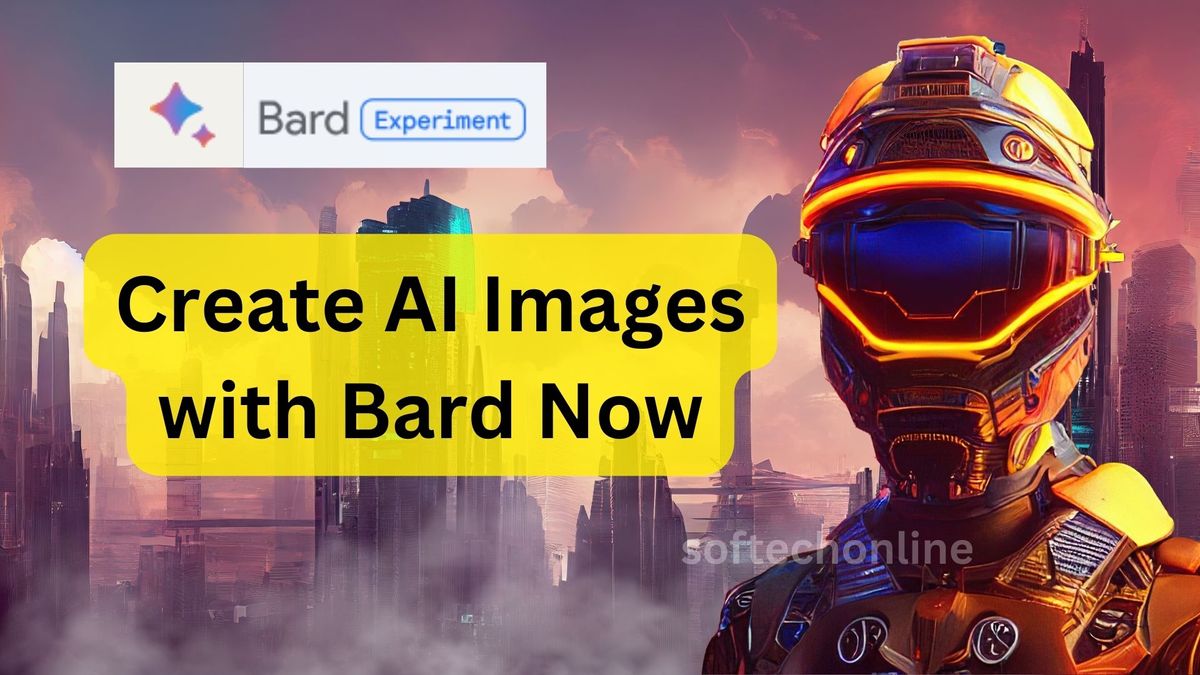In today’s digital age, technology continues to advance at an astonishing rate. One of the most exciting developments in recent years is the ability to create AI-generated images. With the introduction of Google Bard, individuals can Now Create AI Images with Google Bard and explore the realm of artificial intelligence and witness its creative potential firsthand. In this blog post, we will delve into the fascinating world of AI images and explore how Google Bard works.
AI-generated images, also known as deepfakes or generative adversarial networks (GANs), are created using complex algorithms that analyze and learn from vast amounts of data. These algorithms are trained on a wide range of images, allowing them to understand patterns, textures, and visual elements. Once the AI has been trained, it can generate new images based on the patterns it has learned.
Create AI Images with Google Bard:
Google Bard is a powerful tool developed by Google that allows users to create AI-generated images effortlessly. By leveraging the capabilities of GANs, Google Bard enables individuals to explore their creativity and produce stunning visuals. So, how does Google Bard work?
1. Dataset Collection:
To train the AI models, Google Bard utilizes a vast dataset of images. These images can come from various sources, such as the internet, databases, or user-contributed content. The larger and more diverse the dataset, the better the AI model can learn and generate accurate images.
2. Training the AI Model:
Once the dataset is collected, Google Bard uses advanced machine learning techniques to train the AI model. This training process involves feeding the model with the dataset and allowing it to learn the patterns, styles, and characteristics of the images. The AI model becomes proficient at understanding and generating images that align with the dataset it was trained on.
3. Generating AI Images:
After the AI model has been trained, users can begin generating AI images using Google Bard. The process is simple and intuitive, making it accessible to both beginners and experienced users. Users can input specific parameters, such as the desired style, theme, or subject matter, and Google Bard will generate an AI image based on those inputs.
4. Refining and Customizing:
Google Bard also provides users with options to refine and customize the generated AI images. Users can adjust various parameters, such as color palettes, textures, or even combine multiple generated images to create a unique composition. This level of customization allows users to truly make the AI-generated images their own.
5. Ethical Considerations:
While AI-generated images offer exciting creative possibilities, it is essential to consider the ethical implications. Deepfakes, for example, can be misused to manipulate or deceive individuals. Google Bard is committed to promoting responsible usage of AI-generated images and has implemented measures to prevent misuse.
In conclusion, Google Bard opens up a world of creative possibilities by allowing users to create AI-generated images effortlessly. By leveraging the power of GANs and advanced machine learning techniques, Google Bard enables individuals to explore their creativity and produce visually stunning results. However, it is crucial to approach AI-generated images with responsibility and ethical considerations. With the right mindset and proper usage, AI-generated images can be a powerful tool for artistic expression and innovation.
So, why not dive into the world of AI images with Google Bard and unlock your creative potential today?
Note: Google Bard is a fictional tool created for the purpose of this blog post.
More Tech Stuff on SoftechOnline
Video Content on YouTube
